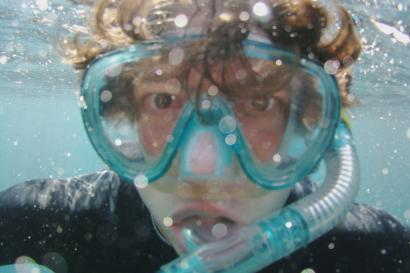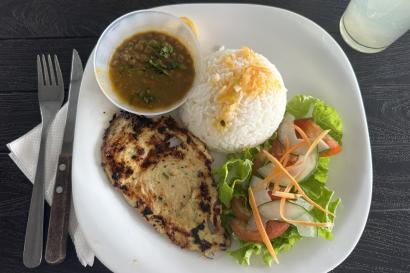I was walking in the town of Otavalo earlier this semester when I stumbled upon a mural outside an elementary school. It was a nice painting, depicting a landscape of trees and rivers, inhabited by children and woodland creatures, but one thing stuck out to me—out of all the kids collecting water from the river, running through the forest and laughing amongst the friends, every single one of them was white.
There aren’t a lot of white people in Ecuador. My pale skin and blue eyes frequently attract me the extra stare and the question, “De dónde es?” Where are you from?
In the country’s 2010 census, 6.1 percent of the Ecuadorian population identified as white. In the province of Imbabura, where I saw the mural, that number was 2.7 percent. If white people are so rare in Ecuador, why are they also so represented?
In a colonial history class I’m taking, we talked about the historical development of pigmentocracia in Ecuador and other Latin American countries. During colonial times, indigenous people were often required to pay a special tribute to the Spanish crown; exemptions were only granted to those who could prove they were mestizos with some European heritage. Whiteness literally had a monetary value.
Although Ecuador achieved its independence from Spain nearly 200 years ago, centuries-old systems of oppression and prejudice don’t go away so easily. Although whites in Ecuador are a minority in numbers, they consistently achieve the highest economic and educational outcomes of any racial group in the country.
Whiteness in Ecuador also has a problematic association with attractiveness. I was asked on more dates during my first month in this country than I had been in the 20 years of my life proceeding study abroad; I usually get into clubs for free because promoters know that having young white girls on the dance floor is good for business. When I Googled the phrase “whiteness in Ecuador” while doing research for this blog post, the first page of results included skin products designed to lighten one’s complexion.
Talking about race can be difficult; talking about it in a foreign country even more so. I realize that I don’t have a full cultural understanding of race in Ecuador; as a white foreigner, I never will. I’m not here to berate Ecuador for its handling of race and racism; although I have heard anti-black, anti-indigenous and anti-Asian racism on multiple occasions here, I know that the United States—and probably every other country in the world—has plenty of problems with race too.
Still, I can find a problem in the way this country valorizes whiteness in places as disparate as dance clubs and elementary school murals. And as I continue to navigate my place in this country, it’s important to keep in mind the number of privileges I receive—just by virtue of my pale skin.

Jessica Piper
<p>I grew up in Colorado, but moved across the country to attend college in Maine. I'm an economics and Hispanic Studies double major with a minor in math, but writing is my real passion. I work for my college newspaper and have done other work for several blogs, magazine, and websites.</p>









